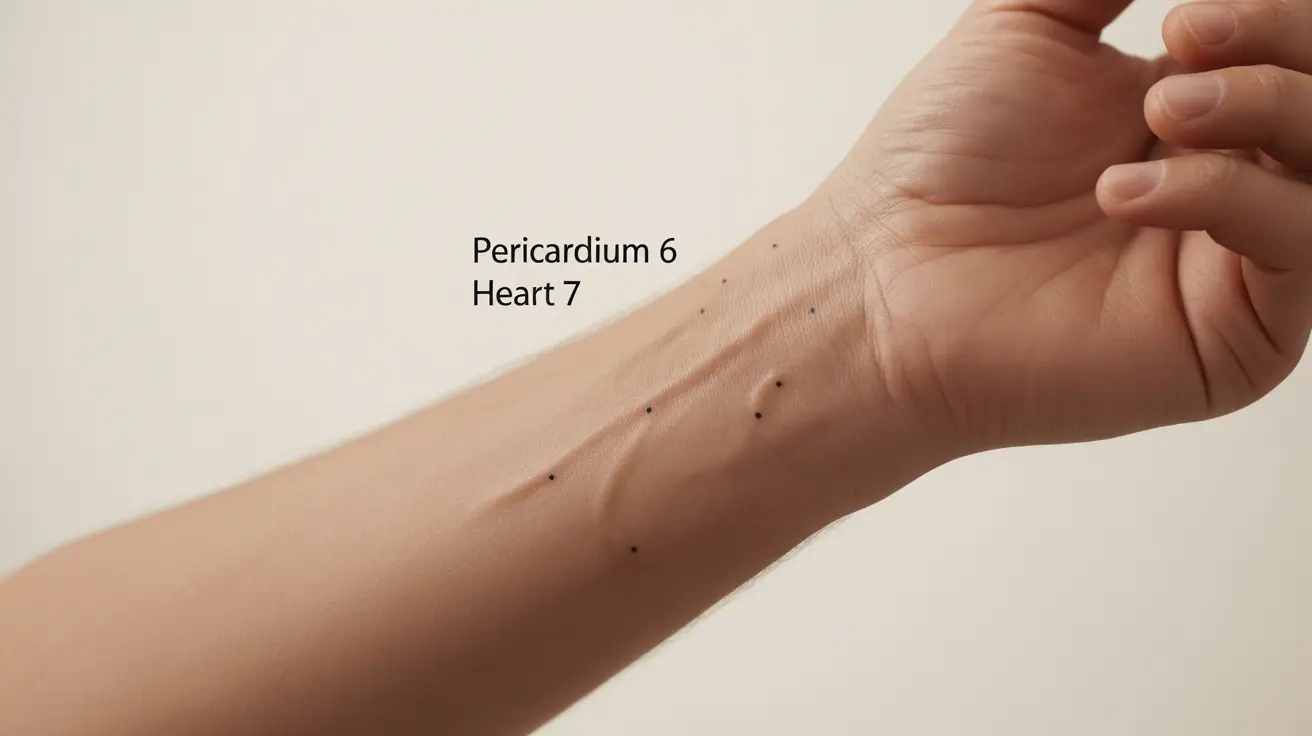If you're struggling with sleep, discovering the power of acupressure could be your pathway to better rest. This ancient healing practice targets specific points on your body to promote relaxation, reduce anxiety, and improve sleep quality naturally. Understanding how to locate and stimulate these pressure points can provide a drug-free alternative for managing sleep difficulties.
In this comprehensive guide, we'll explore the most effective pressure points for sleep enhancement and provide detailed instructions for using them safely and effectively.
Key Pressure Points for Better Sleep
The Spirit Gate Point (Shen Men)
Located on the inner wrist, the Spirit Gate point is considered one of the most powerful spots for promoting sleep. To find it, locate the small hollow on your inner wrist, just below the hand crease. This point is particularly effective for calming the mind and reducing anxiety that may interfere with sleep.
The Three Yin Intersection (San Yin Jiao)
This important point is found on the inner leg, about four finger-widths above the ankle bone. The Three Yin Intersection is known for its ability to promote deep relaxation and address various sleep-related issues, including insomnia and restless legs.
The Inner Frontier Gate (Nei Guan)
Located on the inner forearm, about three finger-widths from the wrist crease, this point helps reduce anxiety and promote overall relaxation. It's particularly useful for those whose sleep issues are connected to stress or nervous tension.
Proper Technique for Applying Pressure
The effectiveness of acupressure largely depends on proper technique. Follow these essential guidelines:
- Use firm but gentle pressure with your thumb or middle finger
- Apply pressure in a circular motion for 2-3 minutes
- Maintain consistent pressure without causing pain
- Practice deep, steady breathing while stimulating points
- Repeat on both sides of the body when applicable
Best Practices for Optimal Results
To maximize the benefits of pressure point therapy for sleep, consider these important factors:
- Practice acupressure 30-60 minutes before bedtime
- Create a calm environment during the practice
- Maintain a consistent routine
- Combine with other good sleep hygiene practices
- Stay patient as results may take time to manifest
Safety Considerations and Precautions
While acupressure is generally safe, certain precautions should be observed:
- Avoid applying pressure to swollen or inflamed areas
- Use gentle pressure if you have circulation issues
- Consult healthcare providers if pregnant or have specific medical conditions
- Stop if you experience any discomfort or adverse reactions
- Don't use acupressure as a replacement for prescribed medical treatments
Frequently Asked Questions
What are the most effective pressure points to stimulate for improving sleep quality?
The most effective pressure points for sleep improvement include the Spirit Gate (Shen Men) on the inner wrist, the Three Yin Intersection (San Yin Jiao) above the ankle, and the Inner Frontier Gate (Nei Guan) on the forearm. These points are particularly powerful for promoting relaxation and addressing sleep difficulties.
How do I locate and apply pressure to the Spirit Gate and Three Yin Intersection points to help with insomnia?
To locate the Spirit Gate, find the small hollow on your inner wrist just below the hand crease. For the Three Yin Intersection, measure four finger-widths above your inner ankle bone. Apply gentle but firm circular pressure for 2-3 minutes on each point using your thumb or middle finger.
Can acupressure on specific points reduce anxiety and promote relaxation for better sleep?
Yes, acupressure can effectively reduce anxiety and promote relaxation. Regular stimulation of sleep-related pressure points helps activate the parasympathetic nervous system, which naturally calms the body and mind, making it easier to fall asleep.
Are there any risks or precautions to consider when using acupressure for sleep, especially during pregnancy?
While acupressure is generally safe, pregnant women should consult healthcare providers before starting any new practice. People with circulation issues, inflammation, or specific medical conditions should exercise caution and use gentle pressure. Always stop if you experience discomfort.
How often should I perform acupressure on sleep-related pressure points to see improvement in insomnia?
For best results, practice acupressure daily, ideally 30-60 minutes before bedtime. Consistency is key – most people begin to notice improvements in their sleep patterns after 1-2 weeks of regular practice. Continue the routine even after seeing improvements to maintain benefits.




